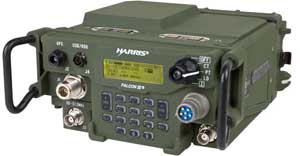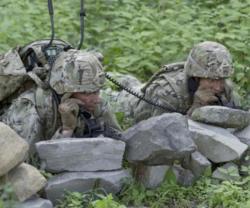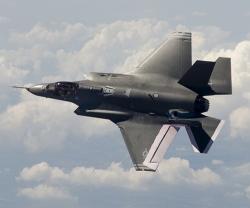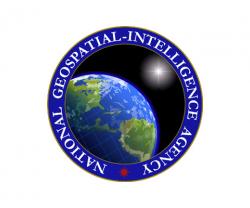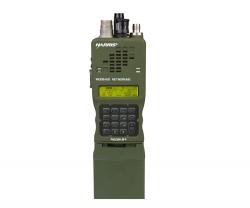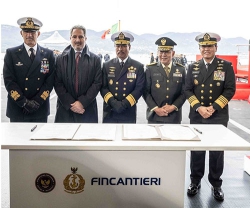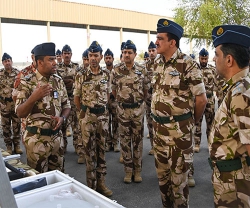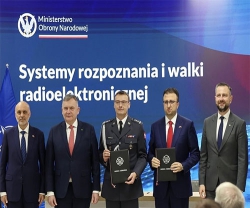Harris’ Falcon III AN/PRC-117G
23.12.2010 North America
Harris successfully integrated its advanced wideband networking radio - already in use by warfighters in the field today - into the future Joint Tactical Radio System (JTRS) Soldier Radio Waveform Network Manager.
During JTRS Contractor Development Testing, the Harris Falcon III(r) AN/PRC-117G multiband manpack radio - operating the JTRS Soldier Radio Waveform (SRW) - demonstrated interoperability with the JTRS SRW Network Manager, an enterprise-wide software application that will provide network management and planning capabilities for JTRS radios.
Warfighters use the network manager to generate and load mission plans and also for real-time monitoring of JTRS radio networks, along with other functions. SRW is being developed to provide tactical voice, high-bandwidth data and battlefield networking connectivity to forces at the front of the fight.
The integration took place in collaboration with the JTRS Joint Program Executive Office Network Enterprise Domain. As a result of the successful test, the AN/PRC-117G and SRW Network Manager are now ready for Formal Qualification Testing.
"Integration of the AN/PRC-117G with the JTRS SRW Network Manager is an exciting step. It illustrates the power and flexibility of the radio's open architecture and represents another milestone for the JTRS Enterprise Business Model," said Brendan O'Connell, President, Department of Defense Business Unit, Harris RF Communications.
Developed under the JTRS Enterprise Business Model (EBM), the AN/PRC-117G is the first JTRS SCA-certified and NSA Type-1 certified wideband manpack radio system. With its fully integrated and NSA-certified High Assurance Internet Protocol Equipment (HAIPE) networking encryption, the AN/PRC-117G provides the highest level of information assurance to tactical commanders and deployed forces in the field. The EBM encourages companies to develop next-generation solutions in tactical communications using their own investment capital to integrate waveform software maintained by the JPEO JTRS Information Repository. In doing so, the EBM stimulates competition, increases innovation, reduces costs through waveform software reuse and speeds development of important capabilities.
During JTRS Contractor Development Testing, the Harris Falcon III(r) AN/PRC-117G multiband manpack radio - operating the JTRS Soldier Radio Waveform (SRW) - demonstrated interoperability with the JTRS SRW Network Manager, an enterprise-wide software application that will provide network management and planning capabilities for JTRS radios.
Warfighters use the network manager to generate and load mission plans and also for real-time monitoring of JTRS radio networks, along with other functions. SRW is being developed to provide tactical voice, high-bandwidth data and battlefield networking connectivity to forces at the front of the fight.
The integration took place in collaboration with the JTRS Joint Program Executive Office Network Enterprise Domain. As a result of the successful test, the AN/PRC-117G and SRW Network Manager are now ready for Formal Qualification Testing.
"Integration of the AN/PRC-117G with the JTRS SRW Network Manager is an exciting step. It illustrates the power and flexibility of the radio's open architecture and represents another milestone for the JTRS Enterprise Business Model," said Brendan O'Connell, President, Department of Defense Business Unit, Harris RF Communications.
Developed under the JTRS Enterprise Business Model (EBM), the AN/PRC-117G is the first JTRS SCA-certified and NSA Type-1 certified wideband manpack radio system. With its fully integrated and NSA-certified High Assurance Internet Protocol Equipment (HAIPE) networking encryption, the AN/PRC-117G provides the highest level of information assurance to tactical commanders and deployed forces in the field. The EBM encourages companies to develop next-generation solutions in tactical communications using their own investment capital to integrate waveform software maintained by the JPEO JTRS Information Repository. In doing so, the EBM stimulates competition, increases innovation, reduces costs through waveform software reuse and speeds development of important capabilities.
Previous PostKarcher’s Cooperation with DRS
Latest news
Latest events
Doha International Maritime Defence Exhibition & Conference (DIMDEX 2026)
19 - 22 Jan 2026Doha - QatarUMEX – SimTEX
20 - 22 Jan 2026ADNEC Centre Abu Dhabi, - United Arab EmiratesWorld Defense Show (WDS) 2026
08 - 12 Feb 2026Riyadh - Saudi ArabiaSAHA EXPO International Defence & Aerospace Exhibition
05 - 09 May 2026İstanbul Expo Center - Turkey

